#boulevard du Temple
Text
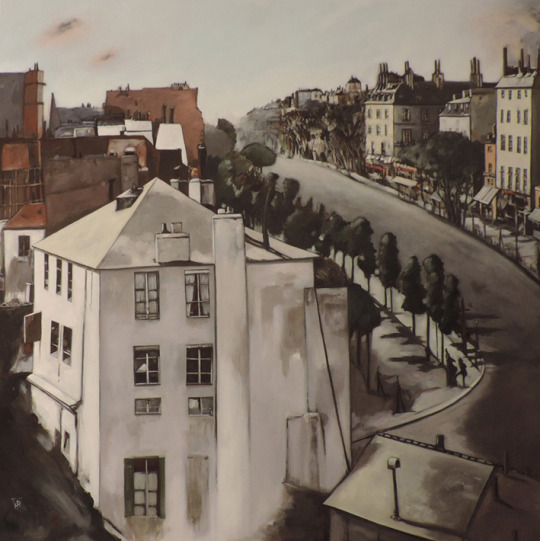
The man from the Boulevard du Temple - Hugues Renck , 2014.
French , b. 1967 -
Oil on canvas , 100 x 100 cm.
96 notes
·
View notes
Text
16 notes
·
View notes
Text
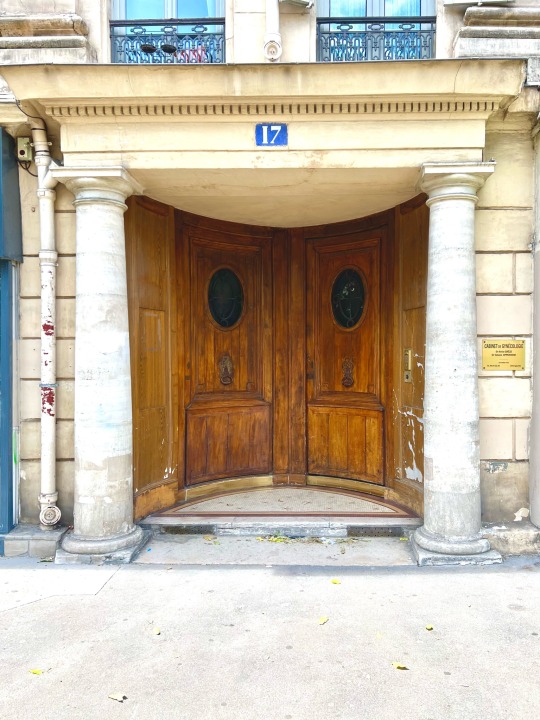
Sur le boulevard du Temple,
Étrange entrée.
Les portes forment une abside,
Un chœur, un tabernacle.
Une niche où s’abriter,
En attendant, un jour de pluie,
Que l’amant descende ouvrir.
Un refuge à mendigots,
Pour souffler quelques instants,
Entre deux passages de condés.
3 notes
·
View notes
Photo

The First Daguerreotype Photo
In the early 19th century, photography as we know it today did not exist. The process of capturing images was a cumbersome and time-consuming one, requiring extensive knowledge of chemistry and optics. It wasn't until 1839 that the French inventor Louis Daguerre changed the course of history with his revolutionary process, the daguerreotype. The first photograph ever made using this process was known as the "View of the Boulevard du Temple."
Louis Daguerre and the Daguerreotype Process
Louis Daguerre was a French artist and inventor who, together with Joseph Nicéphore Niépce, developed the daguerreotype process. This process involved exposing a silver-coated copper plate to iodine vapor, which created a light-sensitive surface. The plate was then exposed to light in a camera, and the image was developed using mercury vapor. The resulting image was a unique, one-of-a-kind photograph with exceptional detail and sharpness.
The "View of the Boulevard du Temple"
The "View of the Boulevard du Temple" is one of the most famous photographs in history. It was taken by Daguerre in 1838 or 1839, and it depicts a busy street scene in Paris. The image is remarkable for several reasons, not the least of which is that it is the earliest known photograph of a human being.
The Challenges of Capturing the Image
The process of taking the "View of the Boulevard du Temple" was not an easy one. The daguerreotype process was notoriously difficult to work with, and it required a great deal of skill and experience to produce a good image. Daguerre himself struggled with the process for years, and it was not until he teamed up with Niépce that he was able to create a practical photographic process.
The Significance of the Image
The "View of the Boulevard du Temple" is significant for several reasons. First, it is the first known photograph to depict a human being, although the person is likely to have been a street vendor who was standing still long enough to be captured by the long exposure. Second, the image is a striking example of the daguerreotype process, which was the first practical method of photography. Finally, the image is a window into the past, giving us a glimpse of life in Paris in the mid-19th century.
Preservation and Legacy
The original daguerreotype plate used to create the "View of the Boulevard du Temple" is now lost, and only a few copies of the image exist. Nevertheless, the photograph remains an important part of photographic history, and it continues to inspire and influence photographers today. The daguerreotype process may have been superseded by newer, more efficient methods of photography, but its legacy lives on in the form of this iconic image.
Conclusion
The "View of the Boulevard du Temple" is a remarkable photograph that captures a moment in time in the early history of photography. It represents the culmination of years of experimentation and hard work by Louis Daguerre and Joseph Nicéphore Niépce, and it is a testament to the enduring power of the daguerreotype process. Today, the photograph serves as a reminder of the incredible advances that have been made in the field of photography, and it stands as a testament to the creativity and ingenuity of the human spirit.
Source: The Daguerreotype Camera: A Revolution in Photography
#daguerreotype#daguerreotype camera#daguerreotype photo#photography history#camera history#boulevard du temple#louis daguerre#joseph nicephore niepce#19th century photography#photography legacy#photograph history
7 notes
·
View notes
Text

Louis Daguerre, Paris Boulevard or View of the Boulevard du Temple
The "Boulevard du Temple" photograph by Louis Daguerre in 1838, is considered to be the earliest surviving photograph of a person (bottom left corner).

Detail of - the 1st photograph of a human. (man getting his shoes shined)
3 notes
·
View notes
Text

Rethinking Fashion Photography
The dawn of fashion photography took place after Louis Daguerre (1787-1851) made the first daguerreotype featuring people, View of the Boulevard du Temple, in 1838. This breakthrough sparked a proliferation of such images, with snapshots of actresses, dancers and debutants, spreading awareness of the new technology.
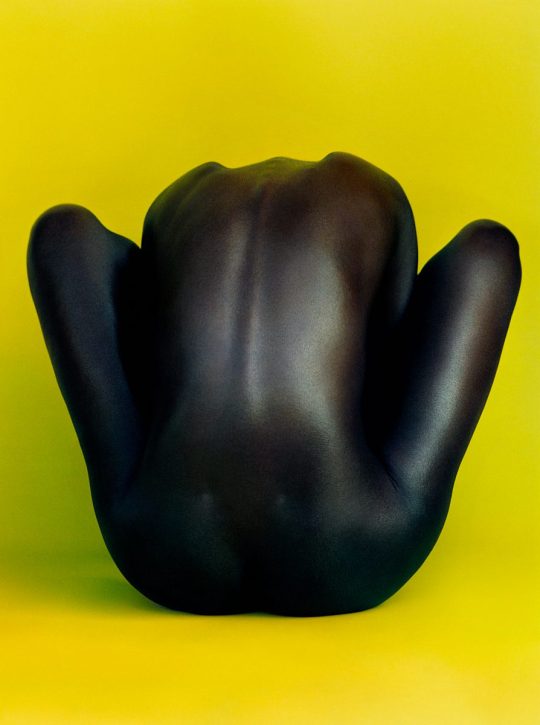
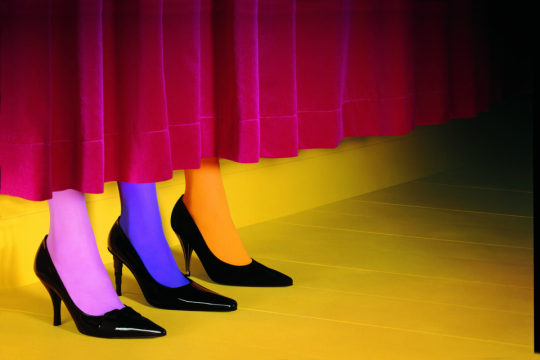


0 notes
Text

Canal Saint-Martin, Paris, France: The Canal Saint-Martin is a 4.6 km long canal in Paris, connecting the Canal de l'Ourcq to the river Seine. Nearly half its length, between the Rue du Faubourg du Temple and the Place de la Bastille, was covered in the mid-19th century to create wide boulevards and public spaces on the surface. Wikipedia
67 notes
·
View notes
Text
Things my special interest makes me immune to: most "eerie" "haunted" "look at this terrifying creepy thing" social media shit that's just like a grainy black and white photo or some 1950s jazz. Recordings of old-timey music isn't going to make me anxious, it's going to make me listen to some nice music that was very popular in a certain decade just like the mid-2000s pop you and I have so much nostalgia about. You try to spook me by showing me the terrifying Boulevard du Temple photograph and I'll laugh in your face because I know the exact process by which the photo was taken and why the clarity was limited by the technology and I also have a trained empathy for humans who lived in times so long ago you think they're practically aliens, and to me the photo looks like a street corner in urban France featuring the first ever photobomber in history, a man getting his shoes polished on a day out. He's probably having a wonderful afternoon, I don't know. "Doesn't it creep you out that everyone in this photograph is dead now?" No. Most people who have ever lived are dead now. One day the person in all my selfies will be "dead now." Come to terms with it now or you'll kill yourself stressing about how to live forever.
Maybe YOU look at a photo of a party from the 1880s and see a sinister supernatural force trying to possess you through the screen. I see a moment in time in which these very real people were existing and having enough fun to want to take a selfie. And how cool that we get to hold onto that for them all these years later.
23 notes
·
View notes
Text

Horloge au carrefour du Boulevard Jules Ferry et de la rue du faubourg du Temple..,
24 notes
·
View notes
Text

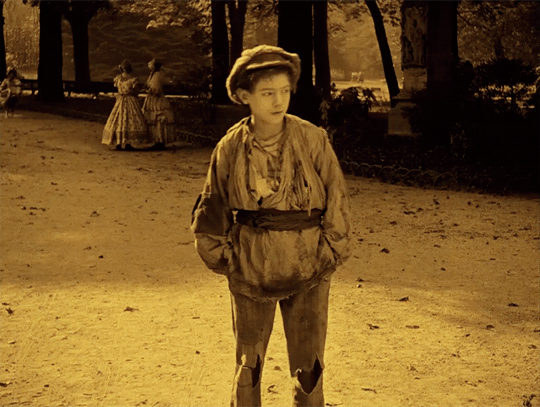
LES MIS LETTERS IN ADAPTATION - Little Gavroche, LM 3.1.13 (Les Miserables 1925)
Eight or nine years after the events narrated in the second part of this story, people noticed on the Boulevard du Temple, and in the regions of the Château-d’Eau, a little boy eleven or twelve years of age, who would have realized with tolerable accuracy that ideal of the gamin sketched out above, if, with the laugh of his age on his lips, he had not had a heart absolutely sombre and empty. This child was well muffled up in a pair of man’s trousers, but he did not get them from his father, and a woman’s chemise, but he did not get it from his mother. Some people or other had clothed him in rags out of charity. Still, he had a father and a mother. But his father did not think of him, and his mother did not love him.
He was one of those children most deserving of pity, among all, one of those who have father and mother, and who are orphans nevertheless.
This child never felt so well as when he was in the street. The pavements were less hard to him than his mother’s heart.
His parents had despatched him into life with a kick.
He simply took flight.
#Les Mis#Les Miserables#Gavroche#Gavroche Thenardier#Les Mis Letters#Les Mis Letters in Adaptation#Les Mis 1925#Les Miserables 1925#lesmisedit#lesmiserablesedit#lesmiserables1925edit#filmedit#silentfilmedit#pureanonedits#I'm behind on chapters but hopefully I will catch up either today or tomorrow.#Charles Badiole
62 notes
·
View notes
Note
Is it true that when armand has lestat tortured and imprisoned, during the events in Paris, that he keeps him in in Magnus’ tower? Because if so that is so psychologically fucked up
Noooootttttt quite. He keeps him in Lestat's own theater.
Armand lives in the tower.
Armand who lived still on the land I'd given him, in the very tower where I'd been made by Magnus, Armand who still commanded the thriving coven of the Theater of the Vampires in the boulevard du Temple, which still belonged to me.
Lestat goes to him, and Armand takes him to the theater and throws him there into the cellars beneath his (own!) theater, starves and tortures him with dead blood until the trial.
What was this place, this enormous building? Was this the boulevard du Temple? And then the descent into that hideous cellar full of ugly copies of the bloodiest paintings of Goya and Brueghel and Bosch.
And finally starvation as I lay on the floor of a brick-lined cell, unable even to shout curses at him, the darkness full of the vibrations of the passing omnibuses and tramcars, penetrated again and again by the distant screech of iron wheels. Sometime in the dark, I discovered a mortal victim there. But the victim was dead. Cold blood, nauseating blood. The worst kind of feeding, lying on that clammy corpse, sucking up what was left. And then Armand was there, standing motionless in the shadows, immaculate in his white linen and black wool.
After the trial Armand takes Lestat back to the tower, all the way up, and gives him Claudia's yellow dress (in which she burned).
And then we went up and up through the old tower to the roof.
Why did I hold this thing, this little dress? I looked out from Magnus's battlements and I saw the city had come to get me. It had reached out its long arms to embrace the tower, and the air stank of factory smoke.
And then Armand... throws Lestat off of Magnus' tower (in a scene that is eerily familiar to episode 5):
He was drawing closer, and in a dark flash his hand went out, and my head went back, and I saw the sky and the city of Paris upside down. I was falling through the air. And I went down and down past the windows of the tower, until the stone walkway rose up to catch me, and every bone in my body broke within its thin case of preternatural skin.
Armand ... tortures and keeps Lestat imprisoned in his own theater.
And then, after torturing him, making him testify against Claudia, then he throws him off of Magnus' tower.
So yeah. Not better imho. And very fucked up.
____
PS: A note to the torture and how Armand knew it would make it possible to have Lestat testify against Claudia:
This has been noted to happen to vampires by Eleni, and employed as a punishment by Armand before, against Nicki (though noted in later books) - this is what Eleni writes to Lestat:
But N., maddened by the pain and the starvation, for this can alter the temperament completely
Armand knew that starvation and drinking dead blood would make Lestat unable to comprehend what was happening, and almost mad.
And he went and starved him on purpose.
That's Armand for you.
#Anonymous#asks#amc iwtv#iwtv#amc interview with the vampire#interview with the vampire amc#iwtv amc#iwtv 2022#interview with the vampire#the vampire lestat#the vampire chronicles#lestat de lioncourt#armand#tw torture#book quotes#eleni#starvation#ask nalyra
63 notes
·
View notes
Text
12 notes
·
View notes
Text
These are the first humans to be captured on film. The photo was taken by Louis Daguerre in 1838, and it shows the Boulevard du Temple in Paris.
Why do you think these two appear in the photograph?
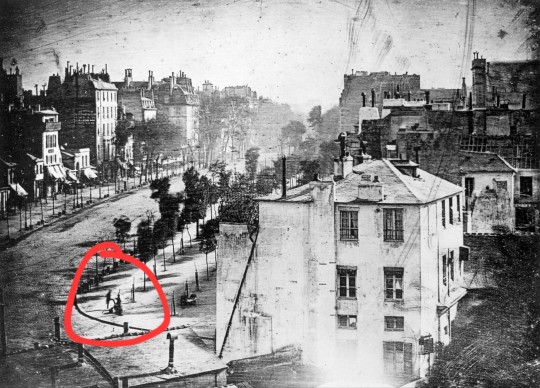

2 notes
·
View notes
Text

para quem, como eu, são viciados no levi´s 501, the vintage, no 25, boulevard du temple, 75003, paris. um paraíso, verdadeiros gurus do jeans
2 notes
·
View notes
Text

The Canal Saint-Martin is a 4.6 km long canal in Paris, connecting the Canal de l'Ourcq to the river Seine. Nearly half its length, between the Rue du Faubourg du Temple and the Place de la Bastille, was covered in the mid-19th century to create wide boulevards and public spaces on the surface. Wikipedia
57 notes
·
View notes
Text
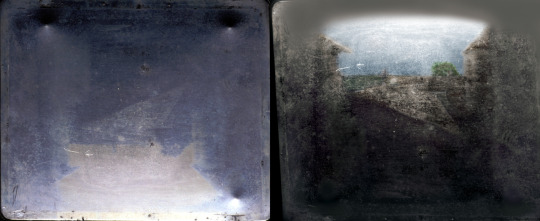
Earliest surviving photograph. View from the window at Le Gas. Joseph Nicéphore Niépce, Saint-Loup-de-Varennes, 1826-27
The left is the original, the right is a rotated colorized version. You can just about see the buildings on each side and the countryside beyond.

Earliest photo of a person (getting their shoes shined at the corner). Louis Daguerre, Boulevard du Temple, Paris, 1838
5 notes
·
View notes